Home>Garden Essentials>How Do You Eat Sunflower Seeds
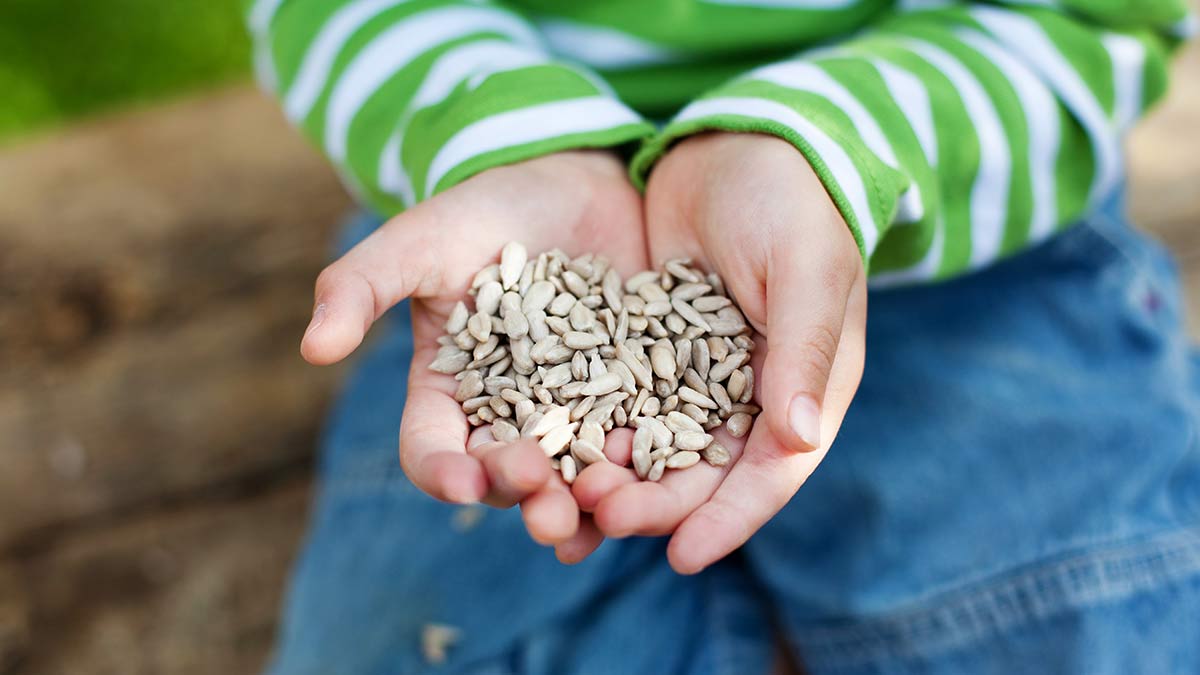

Garden Essentials
How Do You Eat Sunflower Seeds
Modified: March 16, 2024
Learn the best ways to enjoy sunflower seeds from your garden. Discover different methods to eat sunflower seeds and enhance your snacking experience.
(Many of the links in this article redirect to a specific reviewed product. Your purchase of these products through affiliate links helps to generate commission for Storables.com, at no extra cost. Learn more)
Introduction
Welcome to the wonderful world of sunflower seeds! If you’re a fan of healthy snacking and delicious flavors, you’ve come to the right place. Sunflower seeds are not only a satisfying and tasty treat, but they also offer a wide range of health benefits. Whether you enjoy them as a snack, in your favorite recipes, or as a topping for salads, sunflower seeds are versatile and nutrient-rich.
In this article, we will explore the numerous health benefits of sunflower seeds and discover the various ways they can be incorporated into your diet. From roasting and seasoning to creative recipes, we will uncover the secrets of enjoying sunflower seeds to the fullest. So grab a handful of these tiny but mighty seeds, and let’s dive in!
Before we delve into the world of culinary delights with sunflower seeds, let’s take a moment to appreciate the nutritional value they bring to the table. Sunflower seeds are jam-packed with essential nutrients, making them a fantastic addition to any balanced diet.
One of the standout benefits of sunflower seeds is their high content of healthy fats. These tiny seeds are a rich source of monounsaturated and polyunsaturated fats, including omega-3 and omega-6 fatty acids. These fats are essential for maintaining heart health, reducing inflammation, and promoting overall wellbeing.
Sunflower seeds are also an excellent source of plant-based protein, which is great news for vegans and vegetarians. Not only do they provide essential amino acids, but they also deliver a wide range of vitamins and minerals. Key nutrients found in sunflower seeds include vitamin E, magnesium, selenium, and copper.
When it comes to promoting good health, sunflower seeds have a multitude of benefits. They help support a healthy immune system, protect against oxidative stress, and contribute to bone health. Additionally, the abundance of dietary fiber found in sunflower seeds is important for maintaining a healthy digestive system and preventing constipation.
Now that we understand the amazing health benefits of sunflower seeds, let’s explore the different ways in which we can enjoy these nutritious seeds. From classic roasted seeds to unique recipes, the possibilities are endless!
Key Takeaways:
- Sunflower seeds are a delicious and nutritious snack packed with heart-healthy fats, antioxidants, and bone-strengthening minerals. Enjoy them raw, roasted, or in creative recipes for a delightful crunch and a burst of nutty goodness!
- To keep sunflower seeds fresh and flavorful, store them in an airtight container in a cool, dark place away from moisture and light. Consider freezing for long-term storage and enjoy their nutritional benefits whenever the craving strikes!
Read more: What To Do If You Eat Sunflower Seed Shells
Health Benefits of Sunflower Seeds
When it comes to nutrition, sunflower seeds truly shine. These small, nutty seeds boast an array of health benefits that make them a valuable addition to any diet. Let’s take a closer look at some of the incredible benefits sunflower seeds have to offer:
- Heart Health: Sunflower seeds are rich in heart-healthy fats, including monounsaturated and polyunsaturated fats. These fats, particularly omega-3 and omega-6 fatty acids, help lower bad cholesterol levels and reduce the risk of cardiovascular diseases.
- Antioxidant Powerhouse: Sunflower seeds are packed with antioxidants, including vitamin E. Antioxidants protect our cells from free radicals, helping to prevent oxidative damage and reducing the risk of chronic diseases, such as cancer and heart disease.
- Bone Health: Sunflower seeds are a great source of minerals like magnesium, copper, and selenium, all of which are essential for maintaining strong and healthy bones. These minerals contribute to bone density and help prevent conditions such as osteoporosis.
- Immune System Support: Sunflower seeds are packed with nutrients that support a healthy immune system. Vitamin E and selenium, in particular, play crucial roles in immune function and help protect against infections and diseases.
- Weight Management: Despite their small size, sunflower seeds are surprisingly filling, thanks to their high fiber content. They keep you satiated for longer periods, reducing the chances of overeating and aiding in weight management.
- Gut Health: Sunflower seeds are an excellent source of dietary fiber, which is essential for maintaining a healthy digestive system. The fiber in sunflower seeds supports regular bowel movements, prevents constipation, and provides food for beneficial gut bacteria.
These are just a few of the incredible health benefits that sunflower seeds offer. Incorporating these seeds into your daily diet can have a positive impact on your overall well-being. Whether you snack on them alone or use them as a versatile ingredient in various recipes, the nutritional value of sunflower seeds is undeniable.
Different Ways to Eat Sunflower Seeds
When it comes to enjoying sunflower seeds, the possibilities are endless. These versatile seeds can be incorporated into a wide range of dishes and snacks, providing a delightful crunch and nutty flavor. Here are some creative and delicious ways to eat sunflower seeds:
- Raw Snacking: One of the simplest ways to enjoy sunflower seeds is to eat them raw and unprocessed. Just crack open the shell and munch away for a quick and nutritious snack. These seeds are portable and make for a convenient on-the-go treat.
- Roasted Sunflower Seeds: Roasting sunflower seeds brings out their natural flavors and gives them a delightful crunch. To roast sunflower seeds, spread them on a baking sheet and bake them in the oven at 350°F (175°C) for about 10-15 minutes, or until golden brown. Customize the flavor by adding a pinch of salt, spices, or herbs.
- Sprinkle on Salads: Sunflower seeds add a wonderful texture and flavor when sprinkled on top of salads. They pair well with leafy greens, roasted vegetables, or even fruit salads. They provide a healthy crunch and an extra dose of nutrients to your salad creation.
- Baking and Cooking: Sunflower seeds can be incorporated into various baked goods, savory dishes, and even homemade granola bars. Add them to bread, muffins, cookies, or use them as a coating for chicken or fish. Their nutty flavor adds depth to your culinary creations.
- Smoothie Boost: For an extra nutrient kick, add a tablespoon of ground sunflower seeds to your favorite smoothies. They blend well and contribute to a creamy texture, while infusing your smoothie with essential vitamins, minerals, and healthy fats.
- Sunflower Seed Butter: If you have dietary restrictions or simply want a nut-free option, consider making sunflower seed butter. It can be used as a spread on toast, in sandwiches, or as a dip for fruits and vegetables. To make sunflower seed butter, simply blend roasted sunflower seeds with a touch of oil and a pinch of salt until smooth and creamy.
These are just a few examples of how you can enjoy the goodness of sunflower seeds. Feel free to experiment and get creative with your culinary adventures. Whether you’re incorporating them into your meals or enjoying them as a standalone snack, sunflower seeds are sure to add a burst of flavor and nutrition to your day.
Roasting Sunflower Seeds
Roasting sunflower seeds is a popular way to enhance their flavor and create a satisfying crunchy texture. Whether you prefer a classic salted taste or want to experiment with different seasonings, roasting sunflower seeds can be a fun and delicious activity. Here is a simple step-by-step guide to roasting sunflower seeds:
Step 1: Preparation
Start by preheating your oven to 350°F (175°C). While the oven is heating up, gather your sunflower seeds and remove them from their shells. You can buy shelled seeds or use a seed sheller or your fingers to crack open the shells. Discard any damaged or discolored seeds.
Step 2: Cleaning and Drying
Place the seeds in a colander or strainer and rinse them under cold water to remove any debris or residue. Once cleaned, spread them out on a clean kitchen towel and pat them dry to remove excess moisture. It’s important to ensure that the seeds are fully dry before roasting as any remaining moisture can affect the texture and taste.
Step 3: Seasoning
Now it’s time to add flavor to your sunflower seeds. You can keep it simple and sprinkle them with salt for a classic taste, or get creative with various seasonings. Popular options include garlic powder, paprika, chili powder, cayenne pepper, or even a touch of honey for a sweet and savory combination. Toss the seeds in a mixing bowl with the desired seasonings, ensuring they’re evenly coated.
Step 4: Roasting
Spread the seasoned sunflower seeds in a single layer on a baking sheet lined with parchment paper. This allows for even heat distribution and prevents the seeds from sticking. Place the baking sheet in the preheated oven and roast the seeds for about 10-15 minutes, or until they turn a golden brown color. Keep a close eye on them to prevent burning, and stir them every 5 minutes to ensure even roasting.
Step 5: Cooling and Storing
Once roasted, remove the baking sheet from the oven and let the sunflower seeds cool completely before enjoying them. During the cooling process, the seeds will continue to crisp up. Once cooled, transfer them to an airtight container or a resealable bag for storage. Properly stored, roasted sunflower seeds can stay fresh and crunchy for several weeks.
Roasted sunflower seeds make a delightful snack on their own or a delicious addition to salads, trail mixes, or baked goods. They also make great homemade gifts or party favors. So go ahead and roast up a batch of sunflower seeds to enjoy their irresistible flavor and texture. Get creative with your seasonings and explore the endless possibilities!
Removing the Shell of Sunflower Seeds
Sunflower seeds are a popular and nutritious snack, but they typically come with an outer shell that needs to be removed before eating. Removing the shells from sunflower seeds can be a bit time-consuming, but it is well worth the effort for the delicious and healthy kernels inside. Here’s a step-by-step guide on how to remove the shell of sunflower seeds:
Step 1: Crack Open the Shell
Start by holding a sunflower seed between your thumb and forefinger. Place the seed in your mouth, positioning it between your back teeth. Gently apply pressure and crack open the shell without biting into the kernel inside. Alternatively, you can use a nutcracker or pliers to crack open the shell.
Step 2: Extract the Kernel
Once the shell is cracked, use your fingers or your nails to remove the shell and reveal the kernel inside. Take care not to crush the kernel while removing the shell, as it is the part you want to enjoy. If you’re working with a batch of sunflower seeds, you can crack open several shells at once and then remove the kernels one by one.
Step 3: Discard the Shells
As you separate the kernels from the shells, discard the empty shells in a separate container or compost bin. You can also save the shells for other purposes, such as garden mulch or bird feeders. However, be sure to thoroughly crush the shells to prevent birds from using them to build their nests, as this can attract pests.
Step 4: Rinse the Kernels (optional)
After removing the shells, you can rinse the sunflower kernels under cold water to remove any shell fragments or residue. This step is optional but can help ensure that your sunflower seeds are clean and ready to eat.
Once you have removed the shells from the sunflower seeds, you can enjoy the kernels as a healthy snack or use them in various recipes. From adding them to salads and baked goods to incorporating them into granola bars or energy balls, the possibilities are endless.
While removing the shells of sunflower seeds can be a bit time-consuming, it can also be a relaxing and meditative activity. It’s a great way to slow down and enjoy the process of preparing your own nutritious snack. So go ahead and savor the deliciousness of sunflower seeds by mastering the art of shell removal!
When eating sunflower seeds, crack the shell with your teeth and use your tongue to remove the seed. Spit out the shell and enjoy the seed!
Read more: How To Eat A Sunflower Seed
Seasoning Sunflower Seeds
While sunflower seeds are delicious on their own, adding seasonings can take their flavor profile to a whole new level. Whether you prefer a savory, spicy, or sweet taste, seasoning sunflower seeds allows for endless creativity in the kitchen. Here are a few ideas to inspire you when it comes to seasoning sunflower seeds:
Classic Salted: The simplest and most popular way to season sunflower seeds is with salt. Sprinkle a generous pinch of salt over the seeds after roasting, and toss them to ensure even distribution. The salt complements the natural nutty flavor of the seeds, creating a classic and addictive taste.
Savory Herbs and Spices: Experiment with different herbs and spices to give your sunflower seeds a savory twist. Add a dash of garlic powder, onion powder, paprika, or Italian seasoning for an aromatic and flavorful blend. For a spicy kick, include some cayenne pepper, chili powder, or smoked paprika.
Sweet and Spicy: If you enjoy a combination of sweet and spicy flavors, consider experimenting with a mix of seasonings. Try tossing the roasted sunflower seeds with a pinch of cinnamon, a drizzle of honey, and a dash of cayenne pepper for a unique and crave-worthy taste.
Asian-inspired Flavors: Draw inspiration from Asian cuisine by adding soy sauce, sesame oil, and a sprinkle of toasted sesame seeds to your sunflower seeds. These seasonings add a savory and umami flavor that perfectly complements the natural nuttiness of the seeds.
Citrus Zest: For a refreshing and tangy twist, try adding some citrus zest to your sunflower seeds. Grate the zest of a lemon, lime, or orange and toss it with the roasted seeds. The citrus zest adds a bright and zesty note, balancing the richness of the seeds.
Crunchy Coating: For an extra crispy and flavorful coating on your sunflower seeds, consider using crushed crackers, breadcrumbs, or even crushed potato chips. Mix the seeds with your choice of coating before roasting, and enjoy the added texture and flavor.
Custom Blends: Don’t be afraid to get creative and experiment with your own custom seasoning blends. Mix and match your favorite herbs, spices, and other flavorings to create a unique combination that suits your taste buds. The key is to have fun and explore different flavor profiles.
Once you’ve seasoned your sunflower seeds, make sure to toss them well to ensure even coating. Allow the seeds to cool completely before storing them in an airtight container to maintain their freshness and crunchiness. Seasoned sunflower seeds make a fantastic snack or a delicious addition to salads, trail mixes, and homemade granola bars.
So don’t hesitate to get adventurous in the kitchen and elevate the flavor of your sunflower seeds with delicious seasonings. Let your taste buds guide you as you explore the endless possibilities of seasoning sunflower seeds!
Creative Recipes Using Sunflower Seeds
Sunflower seeds are not only a delicious and nutritious snack but also a versatile ingredient that can be used in a variety of creative recipes. From salads and main dishes to baked goods and desserts, sunflower seeds add a delightful crunch and nutty flavor to any dish. Here are some mouthwatering recipes that showcase the versatility of sunflower seeds:
1. Sunflower Seed Pesto: Put a twist on the classic pesto by using sunflower seeds instead of pine nuts. In a food processor, blend together sunflower seeds, fresh basil leaves, garlic, Parmesan cheese, and olive oil until smooth. Toss the pesto with pasta or use it as a flavorful spread for sandwiches and wraps.
2. Sunflower Seed Granola: Make your own crunchy and nutritious granola by combining rolled oats, honey or maple syrup, dried fruits, and a generous amount of sunflower seeds. Bake the mixture in the oven until golden brown and enjoy it as a topping for yogurt, smoothie bowls, or as a nutritious snack on its own.
3. Sunflower Seed Crusted Chicken: Add a delightful crunch to your chicken by coating it with ground sunflower seeds. Dip chicken breasts in beaten eggs, then coat them with a mixture of ground sunflower seeds, breadcrumbs, and your choice of herbs and spices. Bake or pan-fry the chicken until it is cooked through and the crust is golden brown and crispy.
4. Sunflower Seed Energy Balls: Whip up a batch of energy balls using sunflower seeds as a main ingredient. In a food processor, combine sunflower seeds, dates, almond butter, honey, and a pinch of salt. Process until well combined, then roll the mixture into small balls. Refrigerate for a few hours to firm up, and enjoy these nutritious and portable snacks on the go.
5. Sunflower Seed and Quinoa Salad: Create a protein-packed and vibrant salad by combining cooked quinoa, sunflower seeds, diced vegetables like cucumber, bell peppers, and cherry tomatoes, and a tangy dressing made with lemon juice, olive oil, and fresh herbs. This salad is not only delicious but also serves as a hearty and nutritious meal.
6. Sunflower Seed Butter Cookies: Swap out traditional peanut butter with homemade sunflower seed butter to make irresistible cookies. Cream together sunflower seed butter, sugar, eggs, vanilla extract, and a touch of baking soda. Stir in chocolate chips or dried fruit, then drop spoonfuls onto a baking sheet and bake until golden brown. These cookies are perfect for those with nut allergies.
7. Sunflower Seed Milk: For a dairy-free alternative, make your own sunflower seed milk. Soak sunflower seeds overnight, then blend them with water until smooth and creamy. Strain the mixture through a nut milk bag or cheesecloth to remove any solids. Use the sunflower seed milk in smoothies, cereal, or as a substitute for dairy milk in recipes.
These creative recipes are just a starting point for incorporating sunflower seeds into your culinary creations. Feel free to experiment and adapt them to suit your taste preferences. With their nutty flavor and satisfying crunch, sunflower seeds can bring a unique twist to any recipe.
So go ahead and explore the culinary possibilities of sunflower seeds. Whether you’re using them as a topping, a main ingredient, or a substitute for nuts, let their versatility shine through and add a delightful touch to your meals and treats.
Tips for Storing Sunflower Seeds
Proper storage is essential to maintain the freshness and quality of sunflower seeds. When stored correctly, sunflower seeds can stay crunchy and flavorful for an extended period. Here are some helpful tips for storing sunflower seeds:
1. Choose the Right Container: Opt for an airtight container to store your sunflower seeds. Glass jars or food-grade plastic containers with tight-fitting lids work well. The airtight seal will keep moisture and air out, ensuring the seeds stay fresh and crunchy.
2. Keep Away from Light: Sunflower seeds are sensitive to light, which can cause them to turn rancid. Store the seeds in a dark or opaque container. If using a glass jar, place it in a cool and dark cupboard or pantry.
3. Store in a Cool Location: Sunflower seeds are best stored in a cool environment, ideally at temperatures below 70°F (21°C). Avoid exposing them to heat as it can affect their quality. Avoid storing them near appliances such as ovens or stovetops that generate heat.
4. Avoid Moisture: Moisture is the enemy of sunflower seeds, as it can lead to mold or spoilage. Ensure that the seeds are completely dry before storing them. Any moisture can cause them to become soft or stale. Keep the container in a dry place, away from areas with high humidity, such as the kitchen sink or dishwasher.
5. Freeze for Long-Term Storage: If you want to store sunflower seeds for an extended period, consider freezing them. Place the seeds in a resealable freezer bag and remove as much air as possible before sealing. Properly frozen sunflower seeds can stay fresh for up to a year. Thaw them at room temperature before use.
6. Monitor for Rancidity: Check the seeds for signs of rancidity before consuming them. Rancid sunflower seeds will have an off-smell and a bitter taste. If you detect any signs of rancidity, discard the seeds and use fresh ones.
7. Buy in Bulk: If you enjoy sunflower seeds regularly, consider buying them in bulk. This way, you can ensure a continuous supply and have better control over their freshness. Just ensure that your bulk purchase comes from a reputable source and is properly stored upon arrival.
By following these storage tips, you can enjoy the full freshness and flavor of your sunflower seeds for an extended period. Whether you use them as a snack, ingredient, or topping, properly stored sunflower seeds will always deliver a delightful crunch and a burst of nutty goodness.
So go ahead and stock up on sunflower seeds, store them correctly, and indulge in their nutritional benefits and delicious taste whenever the craving strikes.
Conclusion
Sunflower seeds are not only a tasty and versatile snack, but they also offer a plethora of health benefits. From their heart-healthy fats and abundant antioxidants to their bone-strengthening minerals and immune-boosting nutrients, sunflower seeds truly pack a nutritional punch. Incorporating these tiny delights into your diet can contribute to overall wellness and support a healthy lifestyle.
Whether you enjoy them raw, roasted, seasoned, or incorporated into creative recipes, sunflower seeds can be enjoyed in countless ways. Roasting sunflower seeds brings out their natural flavors and creates a satisfying crunch, while seasoning them with different herbs, spices, or coatings allows for endless experimentation and flavor variations.
From sunflower seed pesto to sunflower seed granola, there’s no limit to the delicious recipes you can create with these seeds. They add a delightful crunch, a nutty taste, and a nutritional boost to salads, main dishes, baked goods, and even dairy-free alternatives like sunflower seed milk.
When it comes to storing sunflower seeds, it’s essential to keep them in an airtight container in a cool and dark place, away from moisture and light. Proper storage ensures that the seeds maintain their freshness, crunchiness, and flavor for longer periods.
So, go ahead and explore the world of sunflower seeds! Experiment with different ways to enjoy them, from snacking on them raw to incorporating them into your favorite recipes. With their health benefits and versatility, sunflower seeds are a fantastic addition to any pantry.
So, the next time you find yourself reaching for a healthy and scrumptious snack, don’t forget about the humble sunflower seed. Enjoy the goodness and flavor it brings, and savor the nutritional benefits that come with every crunchy bite. Cheers to the joy of sunflower seeds!
Frequently Asked Questions about How Do You Eat Sunflower Seeds
Was this page helpful?
At Storables.com, we guarantee accurate and reliable information. Our content, validated by Expert Board Contributors, is crafted following stringent Editorial Policies. We're committed to providing you with well-researched, expert-backed insights for all your informational needs.
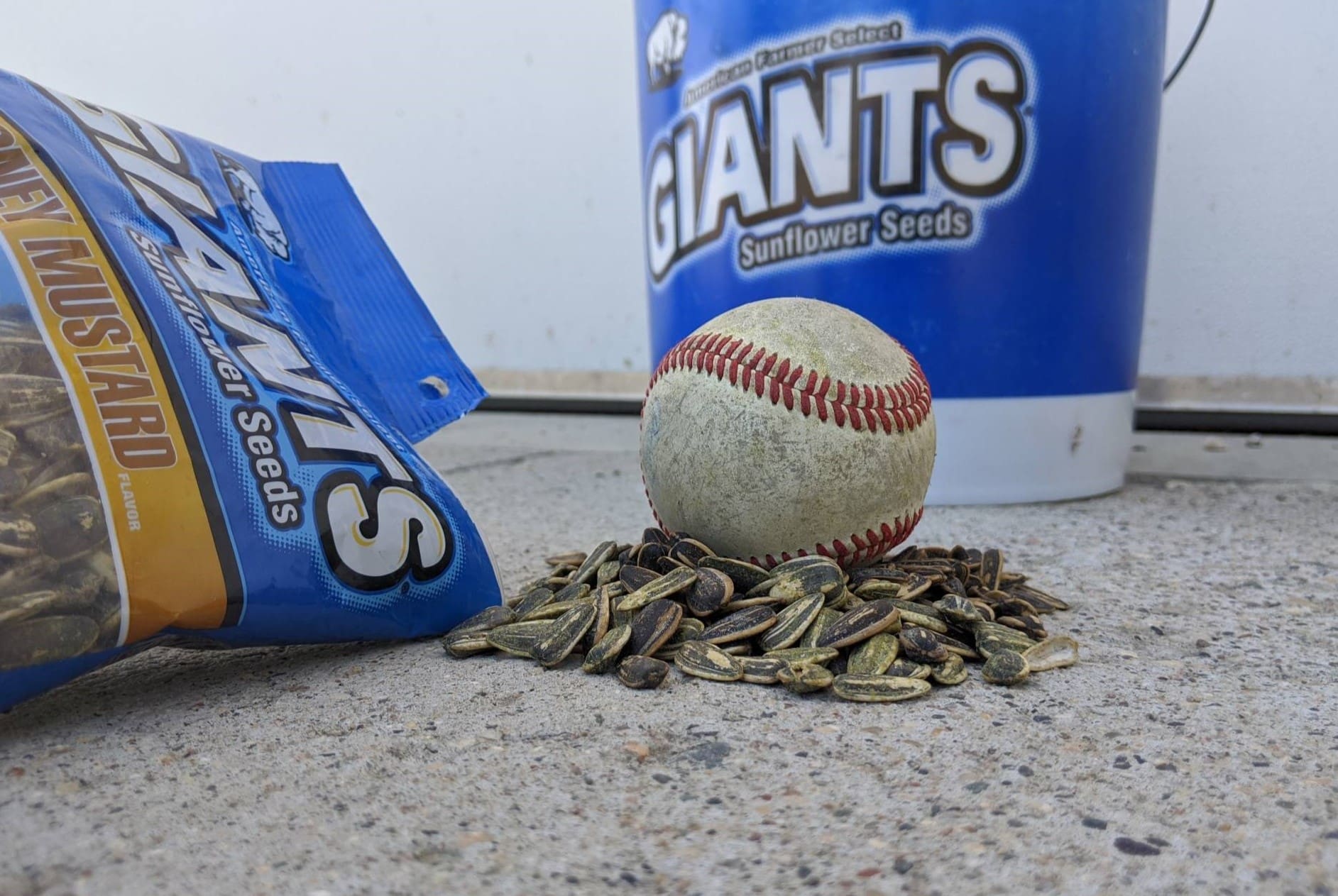
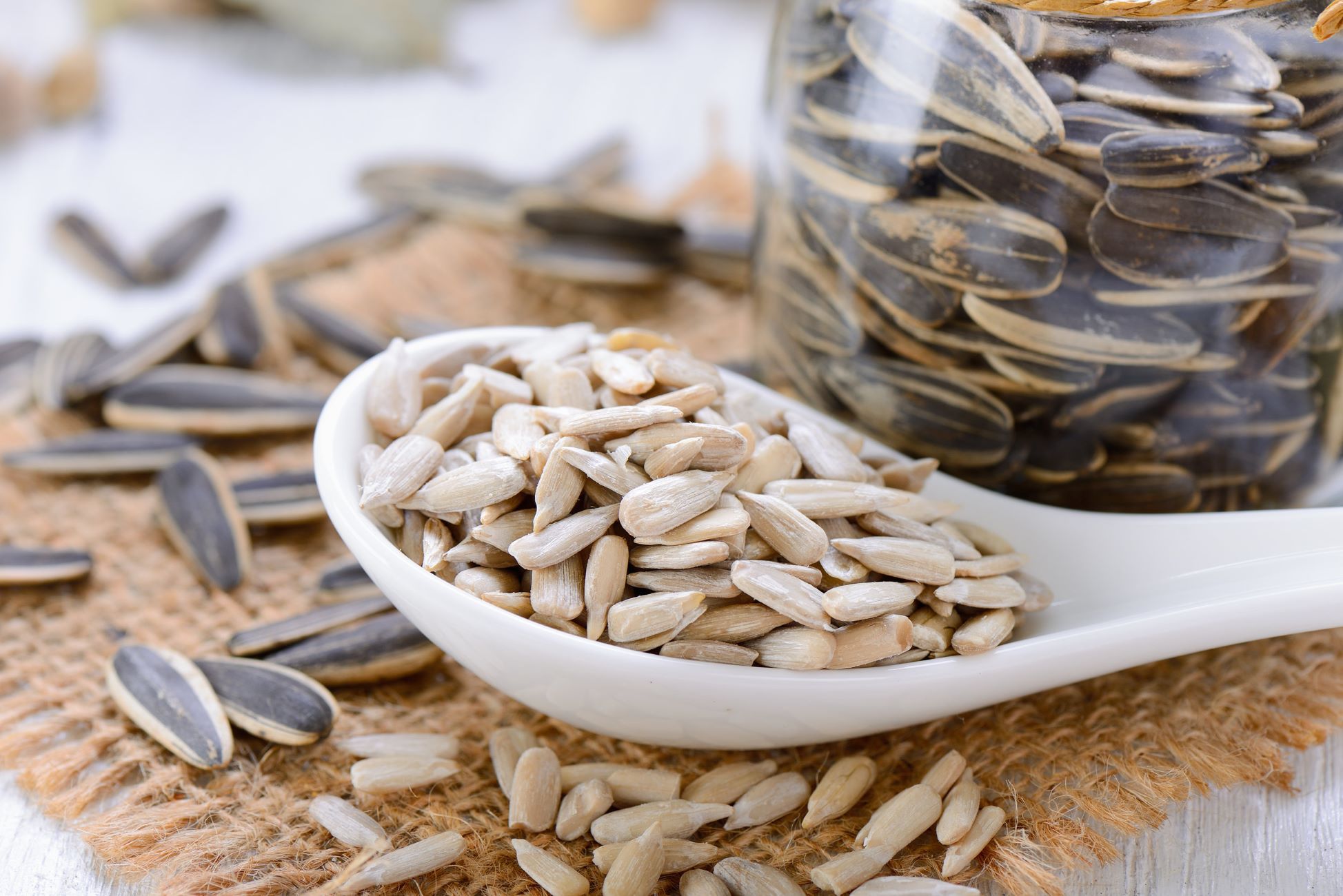
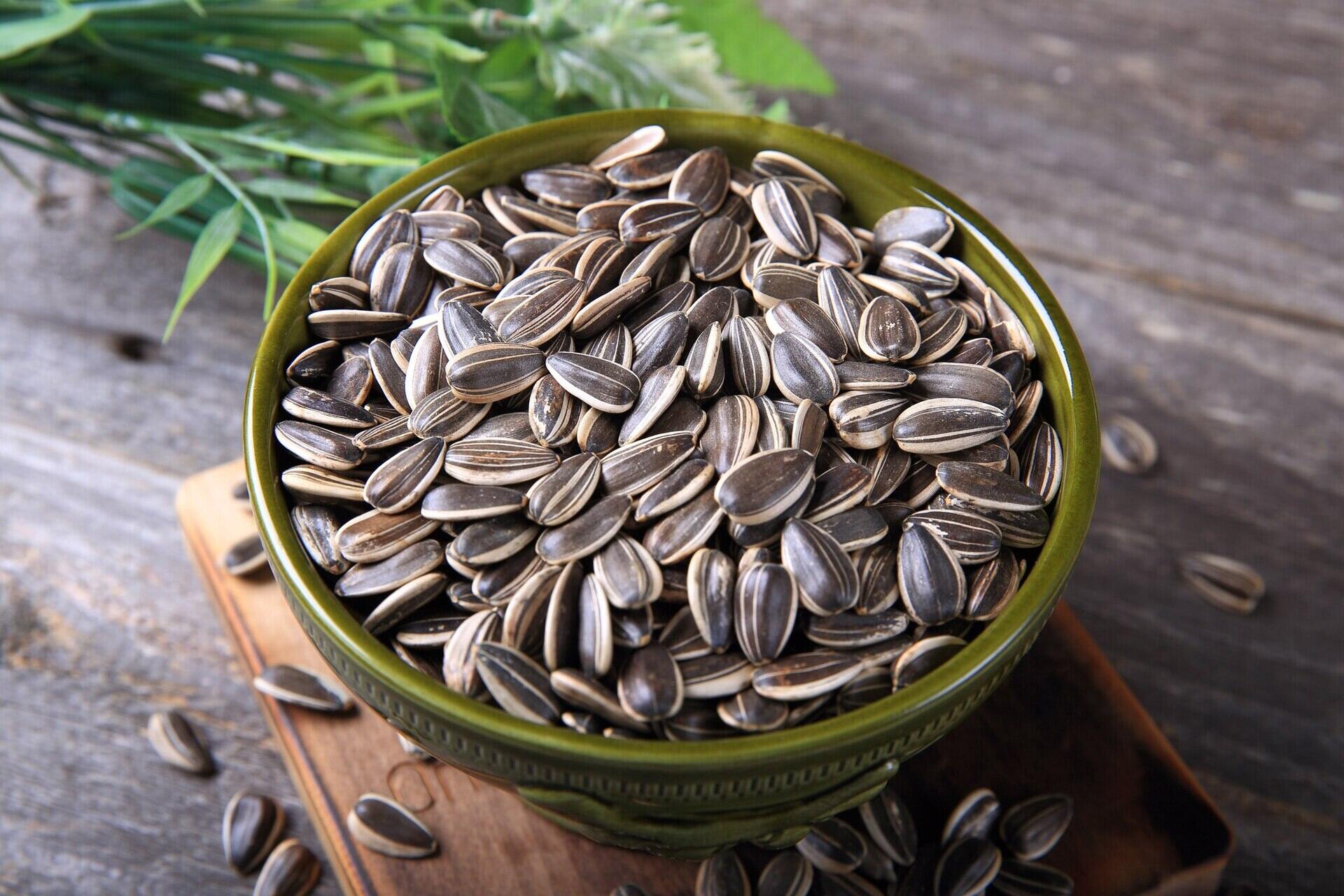
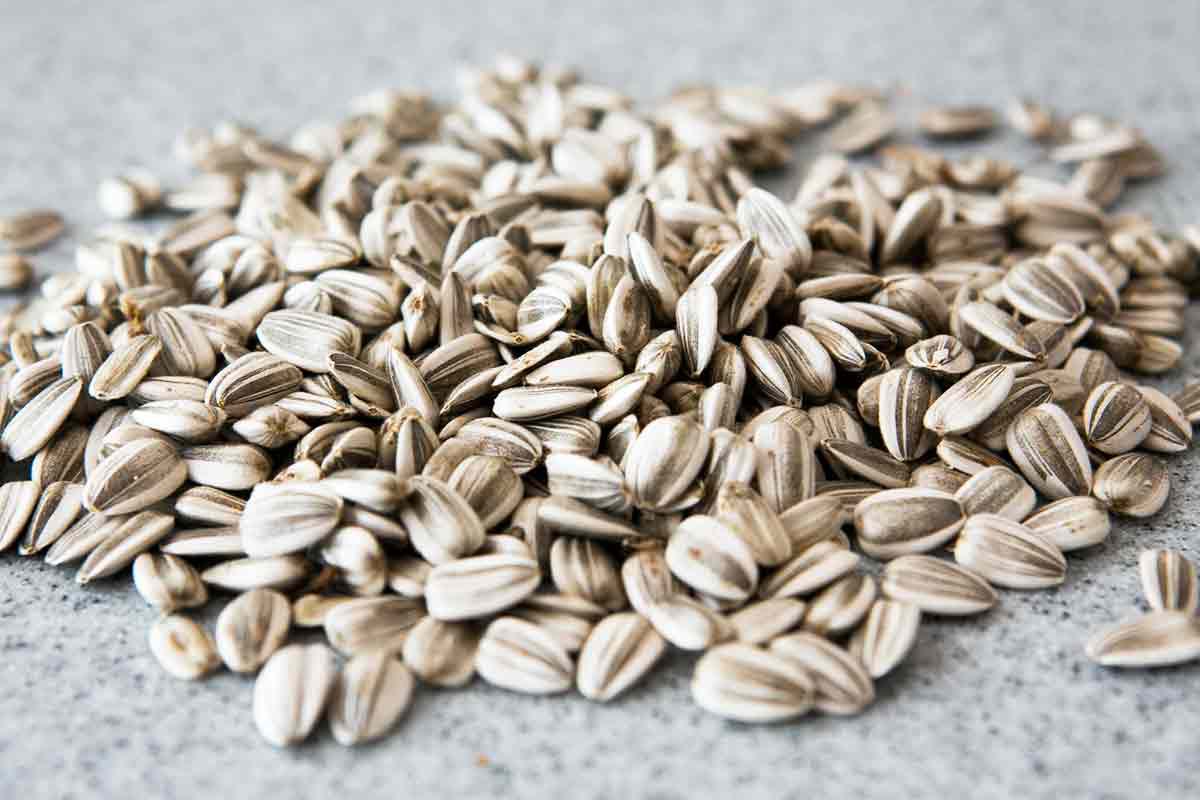
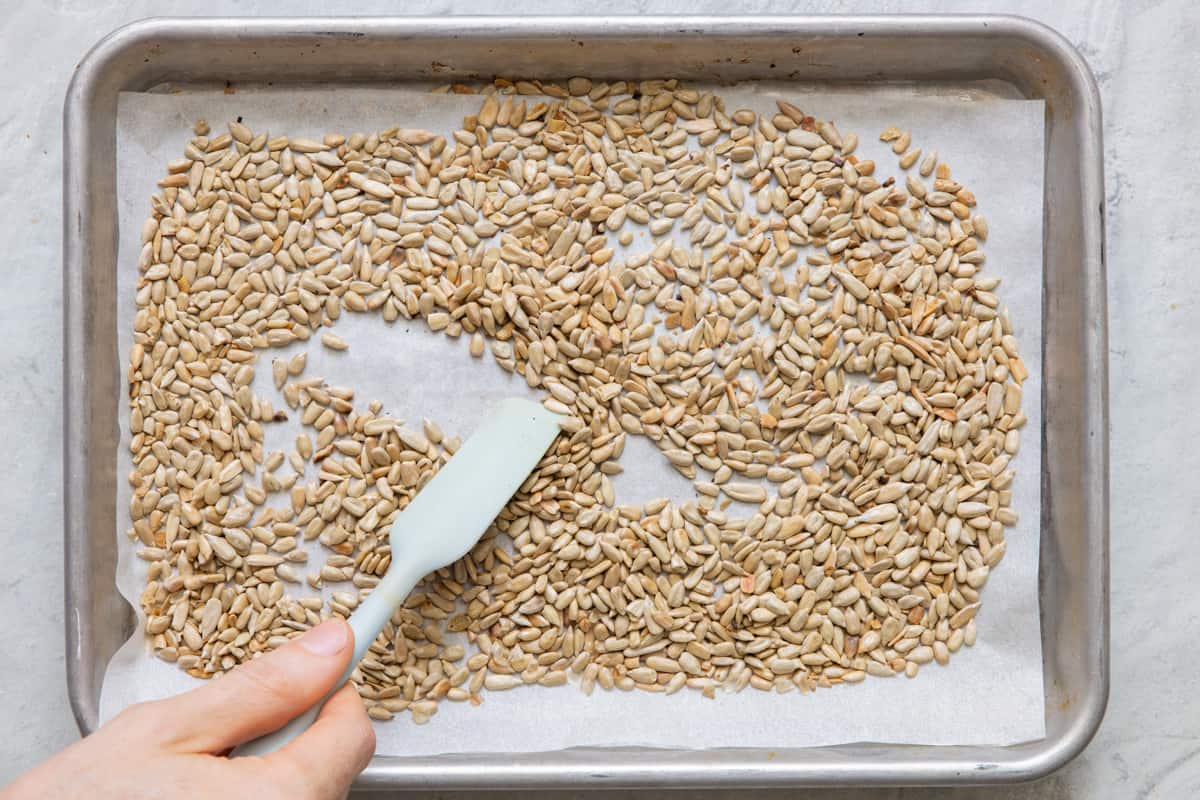
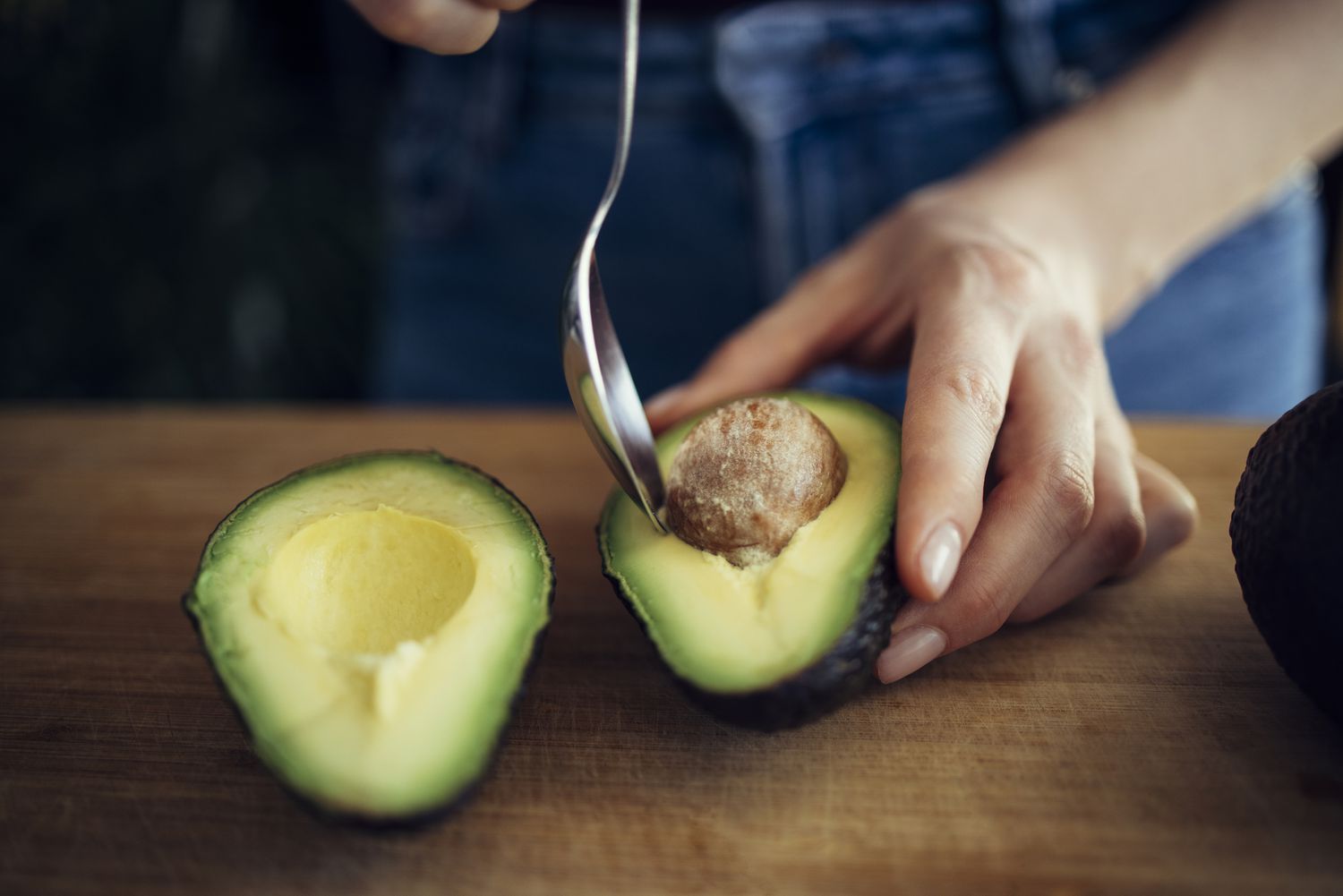
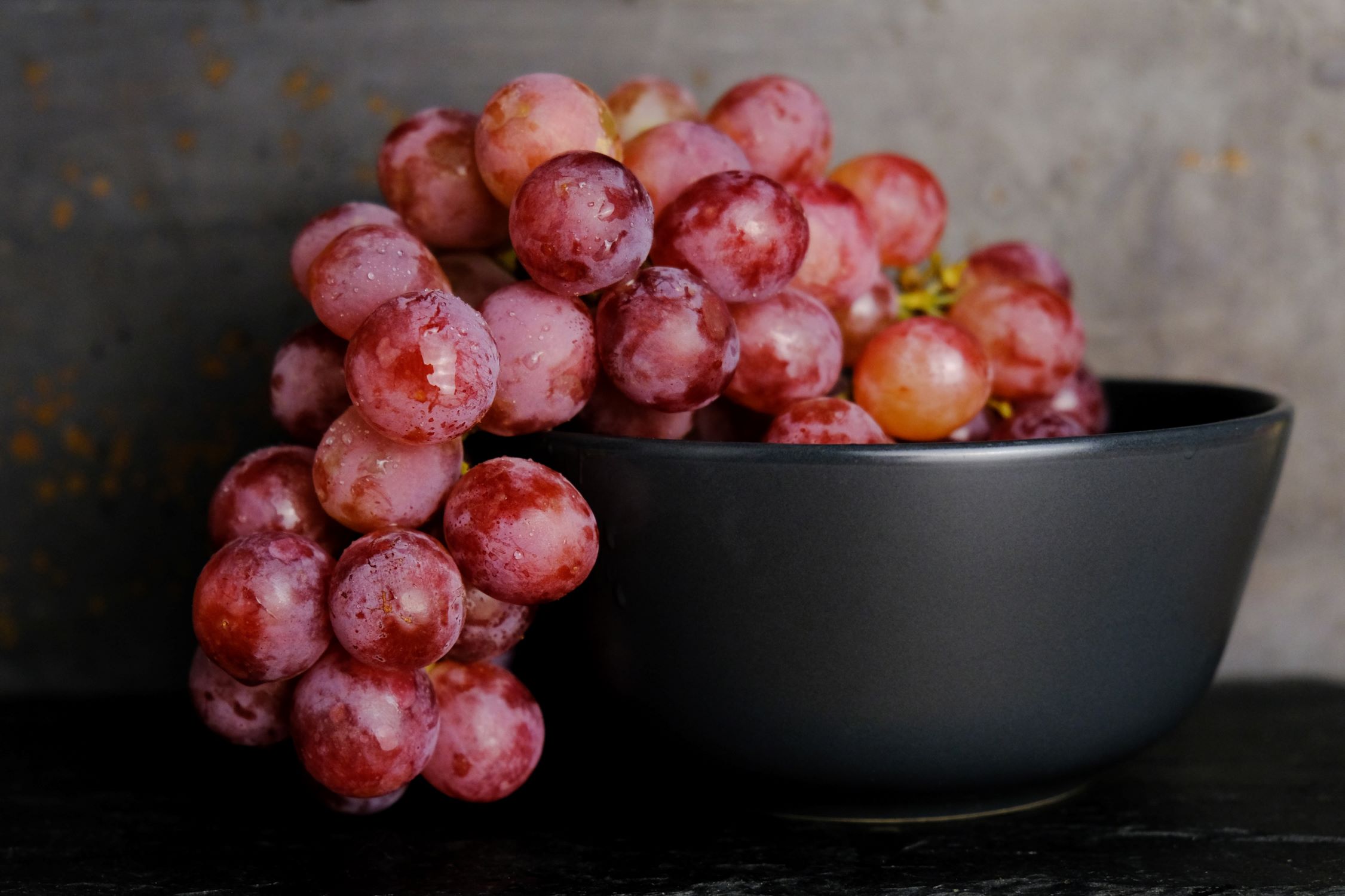

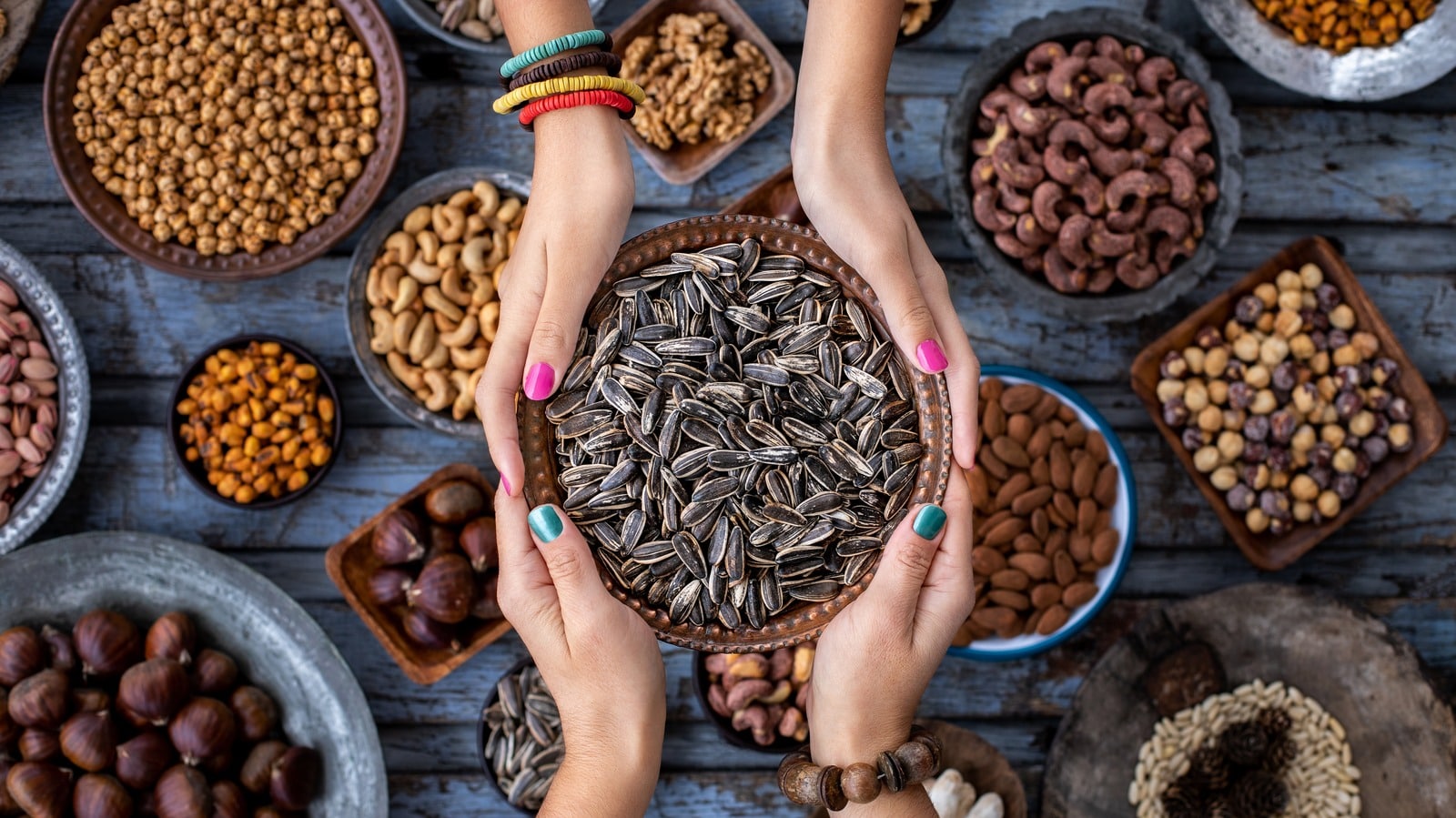
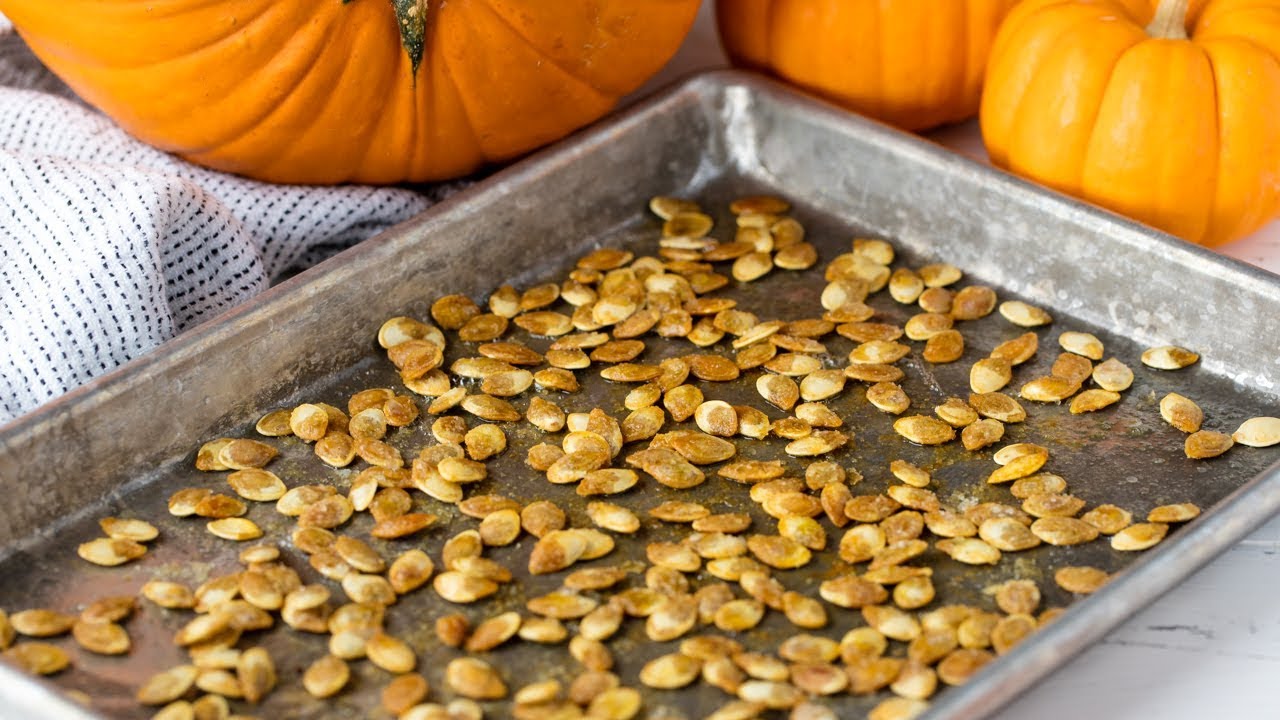
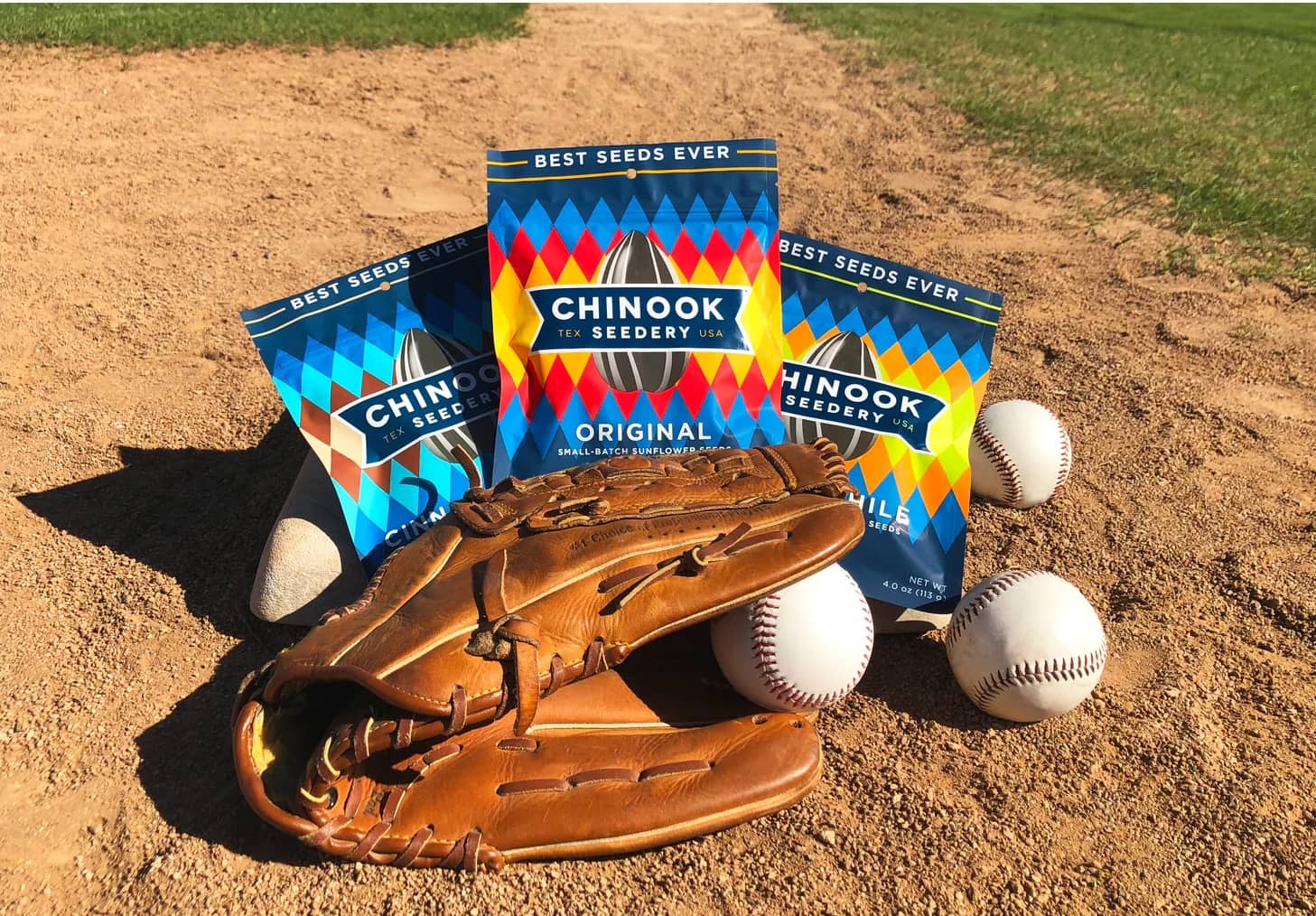

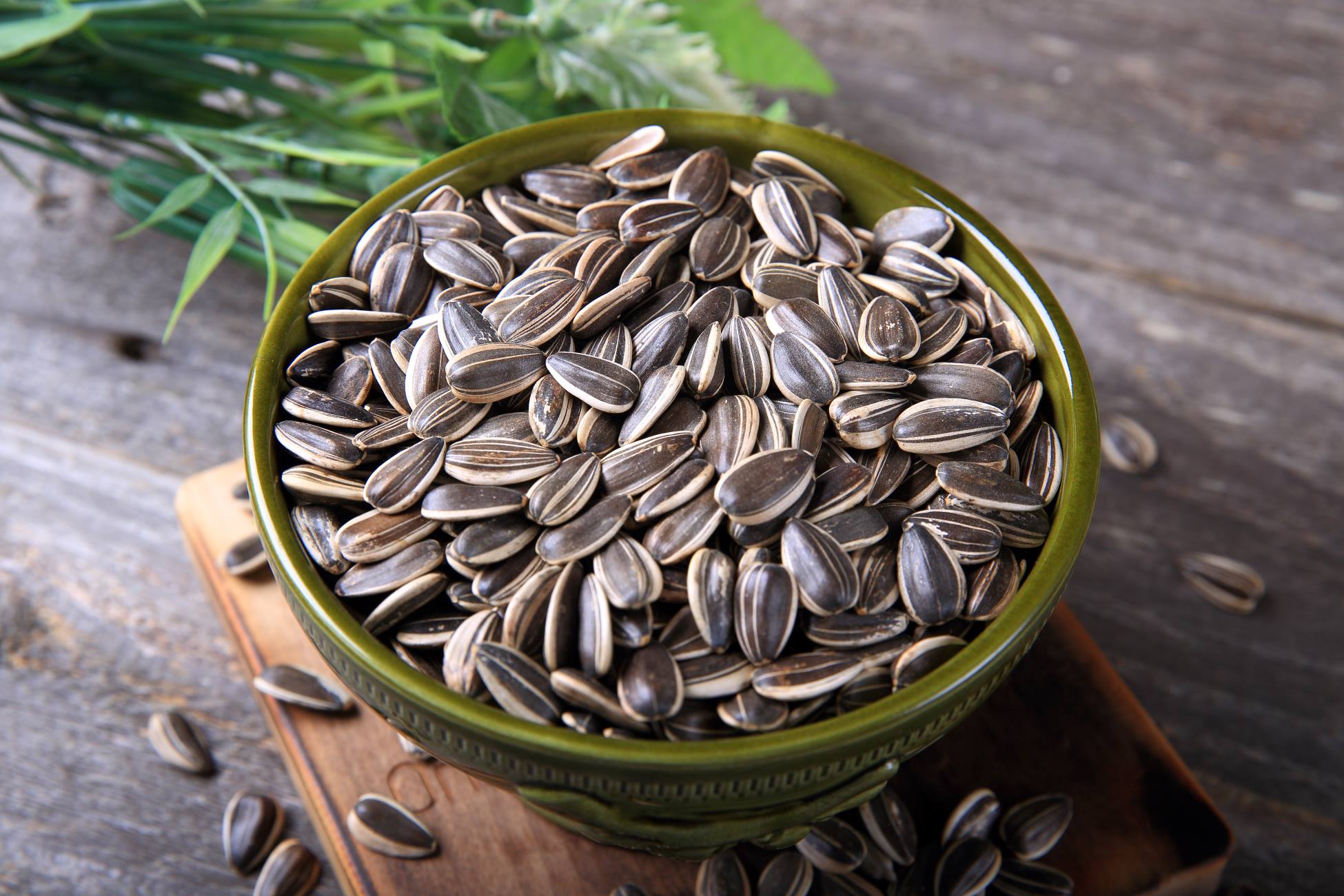
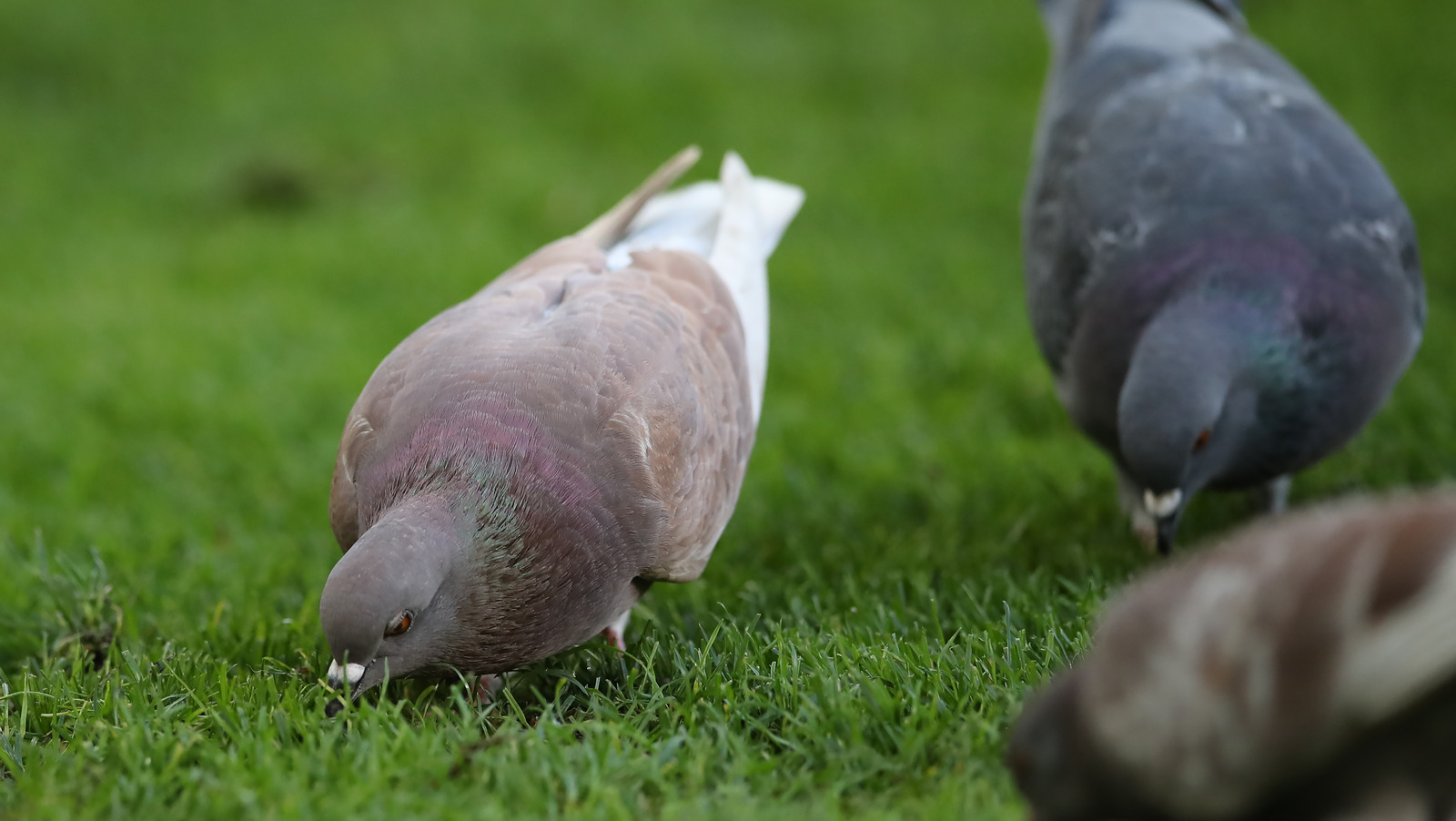

0 thoughts on “How Do You Eat Sunflower Seeds”